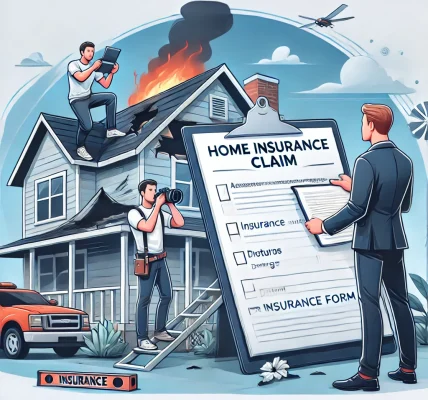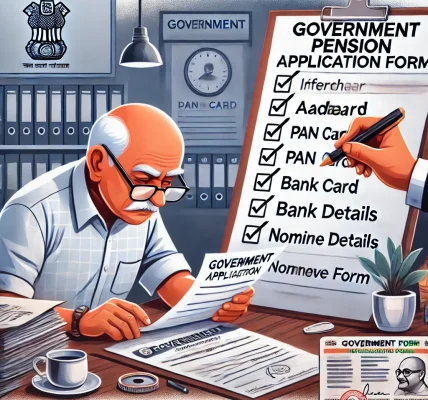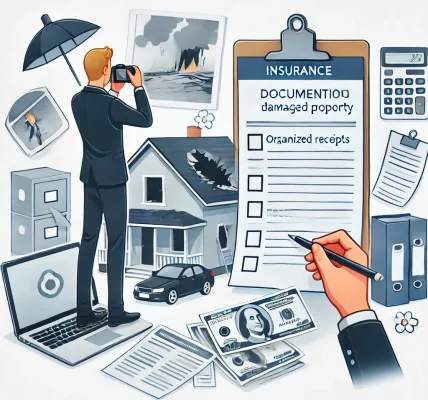Natural disasters—such as hurricanes, earthquakes, floods, and wildfires—can cause severe damage to homes, businesses, and personal property. If you have insurance coverage for such disasters, filing a claim correctly can help you recover financial losses and rebuild your life.
This guide will walk you through the step-by-step process of claiming insurance after a natural disaster, common mistakes to avoid, and best practices for ensuring a smooth and successful claim process.
1. Understanding Your Insurance Policy
Before filing a claim, it’s essential to understand what your insurance policy covers. Different policies cover different types of natural disasters.
Types of Insurance That Cover Natural Disasters:
- Homeowners Insurance – Covers damage caused by storms, fires, and some types of wind-related events.
- Flood Insurance – A separate policy that covers water damage due to flooding (not included in standard homeowners insurance).
- Earthquake Insurance – A separate policy for damages caused by earthquakes.
- Business Insurance – Covers damage to commercial properties and potential loss of income due to a natural disaster.
- Auto Insurance (Comprehensive Coverage) – Covers vehicle damage caused by natural disasters.
Key Policy Terms to Know:
- Deductible – The amount you must pay out of pocket before the insurance company covers the rest.
- Coverage Limits – The maximum amount the insurance company will pay for damages.
- Exclusions – Specific types of damages or disasters not covered by your policy.
2. Immediate Steps to Take After a Natural Disaster
After a disaster strikes, taking immediate action can help speed up the claims process and prevent further damage.
What You Should Do Right Away:
✅ Ensure Safety First – Make sure you and your family are safe before worrying about property damage. Evacuate if necessary.
✅ Document the Damage – Take photos and videos of the damage before making any repairs.
✅ Prevent Further Losses – If possible, take temporary measures to prevent further damage (e.g., covering a broken roof with a tarp).
✅ Keep Receipts – If you need to make temporary repairs or stay in a hotel, save all receipts for reimbursement.
✅ Contact Your Insurance Company – Report the damage as soon as possible. The sooner you file a claim, the faster you can receive compensation.
3. How to File an Insurance Claim After a Natural Disaster
Step 1: Notify Your Insurance Company
Call your insurance provider or file a claim online as soon as possible. Be prepared to provide:
- Your policy number
- Date and type of disaster
- A brief description of the damage
- Contact information
Step 2: Document All Losses
Proper documentation increases the chances of a successful claim. Collect the following:
📷 Photos & Videos – Capture clear images of damaged property.
📝 Written Inventory – List all damaged or lost items, including their estimated value and purchase date.
📜 Receipts & Bills – Keep receipts for repairs, emergency expenses, and hotel stays.
🛑 Police or Disaster Reports – If available, obtain an official report from local authorities.
Step 3: Work With the Insurance Adjuster
Your insurance company will assign an insurance adjuster to assess the damage. The adjuster’s role is to inspect the damage and estimate the amount the insurer will pay.
How to Work With the Adjuster Effectively:
- Be present during the inspection to explain the damages.
- Provide all supporting documents, including photos and receipts.
- Ask for a copy of the adjuster’s report for your records.
Step 4: Review the Insurance Company’s Offer
Once the adjuster completes the inspection, the insurance company will send a settlement offer outlining the amount they will pay. Carefully review the offer and compare it to your estimated costs.
If the offer seems too low:
- Request a detailed breakdown of the settlement.
- Provide additional evidence if needed.
- Consider getting independent estimates from contractors.
Step 5: Get Repairs and Replacement Approved
Before starting major repairs, check if the insurance company requires pre-approval. Keep records of all repair costs and contractor agreements.
4. Common Mistakes to Avoid in Your Insurance Claim
🚫 Delaying the Claim – Waiting too long can result in a denied claim.
🚫 Throwing Away Damaged Items Too Soon – Your insurer may need to inspect them before processing your claim.
🚫 Not Reviewing Your Policy – Knowing your policy details can prevent misunderstandings about coverage.
🚫 Accepting a Low Settlement Without Negotiation – If the insurer’s offer is too low, provide additional documentation to support your claim.
5. What to Do If Your Claim Is Denied
If your insurance claim is denied, don’t panic—there are still options:
🔄 Review the Denial Letter – Your insurer must provide a reason for denial. Check if there was missing information or a misunderstanding.
📞 Contact Your Insurance Provider – Request clarification and provide additional supporting evidence.
✍️ File an Appeal – If you believe the denial is unfair, submit a formal appeal with additional proof.
🧑⚖️ Consult a Public Adjuster or Attorney – If negotiations fail, consider hiring a professional to advocate for you.
6. Final Tips for a Successful Insurance Claim
✔️ Stay Organized – Keep copies of all claim-related documents, emails, and receipts.
✔️ Communicate Regularly – Follow up with your insurer to check the status of your claim.
✔️ Seek Professional Help – If the process becomes overwhelming, consider hiring a public adjuster to negotiate on your behalf.
Conclusion
Filing an insurance claim after a natural disaster can be a challenging experience, but being well-prepared and organized can make the process smoother. By documenting everything, working closely with your insurance provider, and avoiding common mistakes, you can maximize your chances of receiving a fair settlement.
If you need further guidance, consider reaching out to a professional adjuster or legal expert to ensure you receive the compensation you deserve.
Would you like a checklist to help you file your claim smoothly? Let me know!




